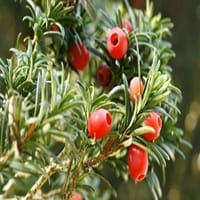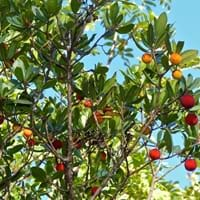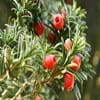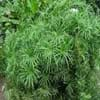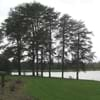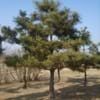Life Span
Perennial
Perennial
Type
Needled or Scaled Evergreen
Tree
Origin
Eastern Asia
Mediterranean
Types
Not Available
Not Available
Habitat
Dappled Shade, Shady Edge, Woodland Garden Secondary, Woodlands
limestone outcrops, Rocky areas, Woodlands
USDA Hardiness Zone
4-7
8-9
Sunset Zone
A2, A3, 2a, 2b, 3a, 3b, 4, 5, 14, 15, 16, 17
8, 9, 14, 15, 16, 17, 18, 19, 20, 21, 22, 23, 24
Habit
Upright/Erect
Upright/Erect
Flower Color
Not Available
White, Light Pink
Flower Color Modifier
Bicolor
Bicolor
Fruit Color
Red
Yellow, Red
Leaf Color in Spring
Dark Green
Dark Green
Leaf Color in Summer
Dark Green
Dark Green
Leaf Color in Fall
Dark Green
Dark Green
Leaf Color in Winter
Dark Green, Bronze
Dark Green
Leaf Shape
Pinnate
Orbiculate
Plant Season
Spring, Summer, Fall, Winter
Spring, Summer, Fall, Winter
Sunlight
Full Sun, Partial Sun, Partial shade, Full Shade
Full Sun, Partial Sun
Type of Soil
Loam
Loam, Sand
The pH of Soil
Acidic, Neutral, Alkaline
Acidic, Neutral
Soil Drainage
Well drained
Well drained
Bloom Time
Fall, Spring, Summer, Winter
Spring, Late Spring, Early Summer, Summer, Late Summer, Early Fall, Fall, Late Fall
Tolerances
Drought
Drought
Where to Plant?
Ground
Ground
How to Plant?
Stem Cutting, stem tip cuttings, Tip cutting
Seedlings
Plant Maintenance
Medium
Medium
Watering Requirements
Average Water Needs, Do Not over Water, Do not water frequently
Requires regular watering
In Summer
Lots of watering
Lots of watering
In Spring
Moderate
Moderate
In Winter
Average Water
Average Water
Soil pH
Acidic, Neutral, Alkaline
Acidic, Neutral
Soil Type
Loam
Loam, Sand
Soil Drainage Capacity
Well drained
Well drained
Sun Exposure
Full Sun, Partial Sun, Partial shade, Full Shade
Full Sun, Partial Sun
Pruning
Remove damaged leaves, Remove dead branches, Remove dead leaves
Prune in early spring, Prune in late winter, Remove damaged leaves, Remove dead branches, Remove dead leaves
Fertilizers
All-Purpose Liquid Fertilizer
All-Purpose Liquid Fertilizer
Pests and Diseases
Red blotch
Red blotch
Plant Tolerance
Drought
Drought
Flowers
Not Available
Showy
Flower Petal Number
Single
Single
Foliage Texture
Fine
Medium
Foliage Sheen
Not Available
Glossy
Attracts
Aphids, Mealybugs, White Pine Weevil
Hummingbirds
Allergy
Pollen
Hay fever, Oral Allergy, Skin irritation
Aesthetic Uses
Bonsai, Borders
Beautification, Showy Purposes
Beauty Benefits
Not Available
Not Available
Environmental Uses
Air purification
Air purification
Medicinal Uses
anti-cancer
Antioxidants
Part of Plant Used
Fruits, Wood
Fruits
Other Uses
Used as a dye, Wood is used for making furniture
Traditional medicine, Used As Food, Used as Ornamental plant, Used for its medicinal properties
Used As Indoor Plant
No
Yes
Used As Outdoor Plant
Yes
Yes
Garden Design
Feature Plant, Foundation, Groundcover, Hedges, Screening, Wind Break, Topiary, Bonsai, Espalier
Shade Trees, Street Trees
Botanical Name
TAXUS cuspidata
ARBUTUS 'Marina'
Common Name
spreading yew
Marina Strawberry Tree, Strawberry Tree
In Hindi
Japanese Yew
झरबेरी पेड़
In German
japanische Eibe
Erdbeerbaum
In French
Japanese Yew
arbousier
In Spanish
tejo japonés
Árbol de fresa
In Greek
Ιαπωνικά Yew
φράουλα δέντρο
In Portuguese
Xapanese Filho
medronheiro
In Polish
Xapanese Son
Strawberry Tree
In Latin
Filius Xapanese
arbutus
Phylum
Tracheophyta
Magnoliophyta
Class
Pinopsida
Magnoliopsida
Family
Taxaceae
Ericaceae
Clade
Not Available
Angiosperms, Asterids, Eudicots
Tribe
Not Available
Not Available
Subfamily
Not Available
Not Available
Number of Species
Not Available
Not Available
Importance of Japanese Yew and Strawberry Tree
Want to have the most appropriate plant for your garden? You might want to know the importance of Japanese Yew and Strawberry Tree. Basically, these two plants vary in many aspects. Compare Japanese Yew and Strawberry Tree as they differ in many characteristics such as their life, care, benefits, facts, etc. Every gardener must at least have the slightest clue about the plants he wants to plant in his garden. Compare their benefits, which differ in many ways like facts and uses. The medicinal use of Japanese Yew is anti-cancer whereas of Strawberry Tree is Antioxidants. Japanese Yew has beauty benefits as follows: Not Available while Strawberry Tree has beauty benefits as follows: Not Available.
Compare Facts of Japanese Yew vs Strawberry Tree
How to choose the best garden plant for your garden depending upon its facts? Here garden plant comparison will help you to solve this query. Compare the facts of Japanese Yew vs Strawberry Tree and know which one to choose. As garden plants have benefits and other uses, allergy is also a major drawback of plants for some people. Allergic reactions of Japanese Yew are Pollen whereas of Strawberry Tree have Hay fever, Oral Allergy and Skin irritation respectively. Having a fruit bearing plant in your garden can be a plus point of your garden. Japanese Yew has showy fruits and Strawberry Tree has showy fruits. Also Japanese Yew is not flowering and Strawberry Tree is not flowering . You can compare Japanese Yew and Strawberry Tree facts and facts of other plants too.
